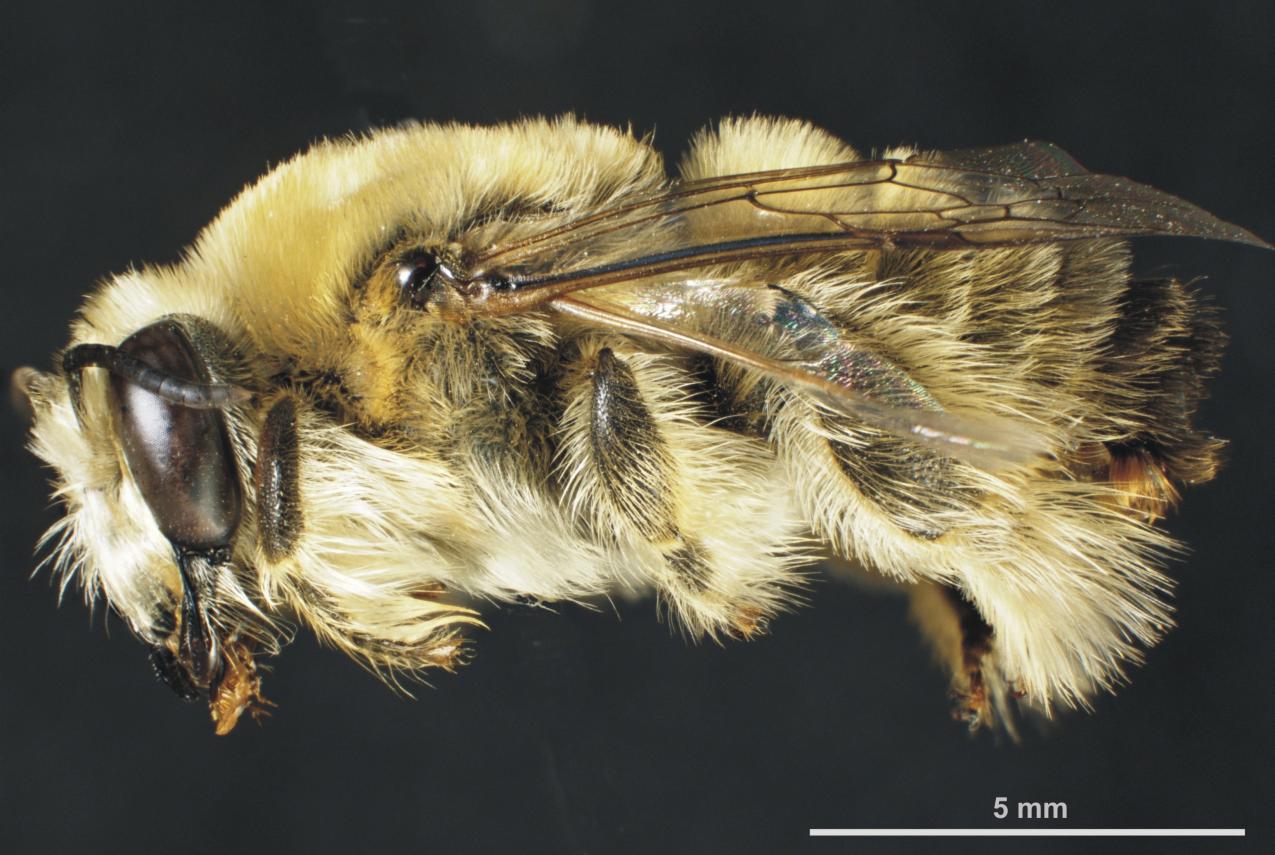A very unusual species of bee has been discovered during a recent field study trip to the Ravensthorpe region in the south of Western Australian.
Western Australian Museum research associate Terry Houston said the bee has yet to be scientifically named and described and, in the interim, has been dubbed the 'Shaggy Spined Bee'.
“I became aware of the existence of the species a few years ago after finding five specimens among material donated to the WA Museum by two private collectors,” Dr Houston said.
“They had been collected from the Ravensthorpe region over a number of years, the earliest in 1986, and were unlike any bee I had seen before.”
With funding by the Harry Butler Bequest, Dr Houston and a volunteer travelled to the Great Southern, South Coastal and South-West regions in search of the bee in January this year.
The pair focused on flowering mallees from the Newdegate region to Hopetoun, and the Stirling Range, encountering the spined bees only south and west of Ravensthorpe on the fringes of the Fitzgerald River National Park. The bees were found only on flowers of the Swamp Mallett, Eucalyptus spathulata, a species restricted to southern WA.
Dr Houston said the ‘Shaggy Spined Bees’ are a little larger than honeybees and unusually have two pairs of spines on their thorax or ‘back’.
“The males and females are very different in appearance, with the males covered in dense, long, straw-coloured 'hair', so dense and long on the hind legs that the bees look like they are wearing long, baggy trousers,” Dr Houston said.
“The females have a mostly bare, black body except for a band of rust-coloured, felt-like hair across the front part of the thorax.”
Dr Houston said the males were very fast flying and difficult to net as they spent the whole day in flight, searching for females.
“The bee is likely to be solitary in habits and ground-nesting like its nearest relatives. It appears the species is active only during late January and early February while the Swamp Mallet is in flower,” he said.
Another interesting find near Ravensthorpe was a bee much larger than the honeybee named Ctenocolletes fulvescens, previously known only from country bordering the Great Australian Bight.
“The bee was encountered at the same flowers as the spined bee,” Dr Houston said.
“The female is distinguished by its orange-brown abdomen which glistens gold in sunlight, and is notable for the 'chirping' noise it makes while working the flowers for nectar and pollen.”
The ‘Shaggy Spined Bee’ will now undergo further research before being scientifically named and described.
Media contact:
Niki Comparti
Western Australian Museum
6552 7805, niki.comparti@museum.wa.gov.au
